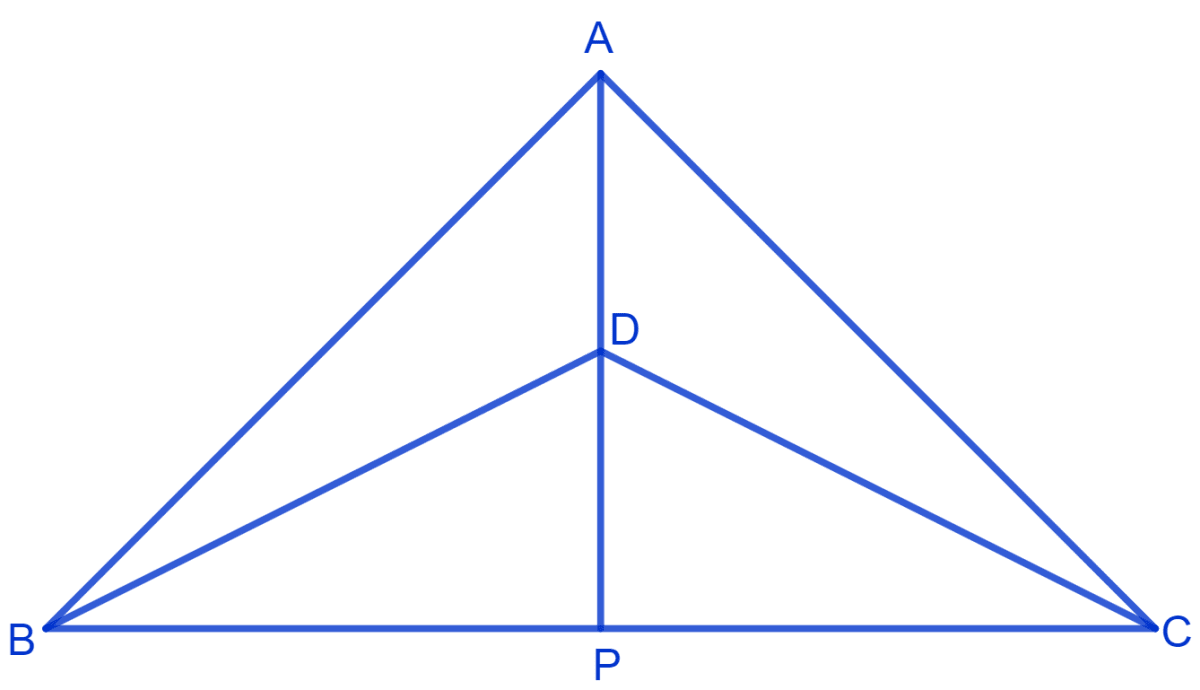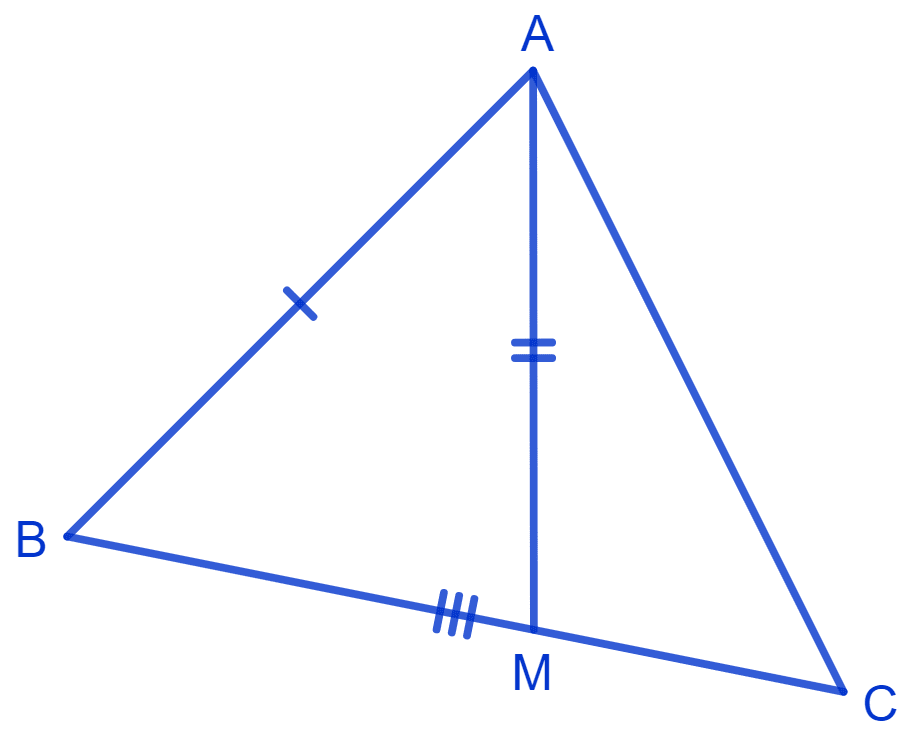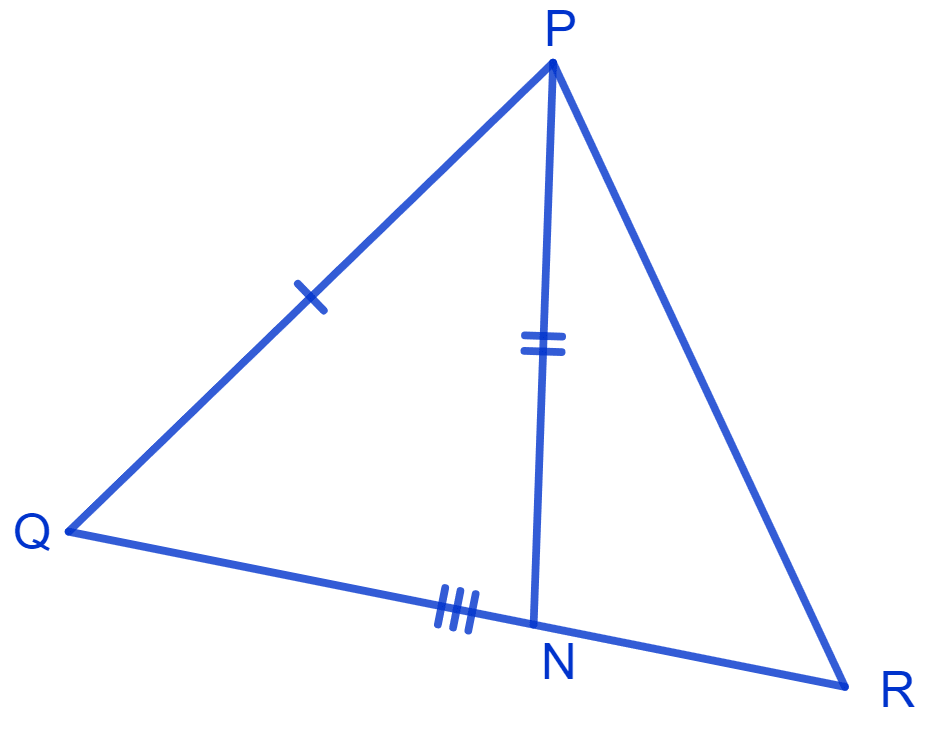Mathematics
Δ ABC and Δ DBC are two isosceles triangles on the same base BC and vertices A and D are on the same side of BC. If AD is extended to intersect BC at P, show that
(i) Δ ABD ≅ Δ ACD
(ii) Δ ABP ≅ Δ ACP
(iii) AP bisects ∠A as well as ∠D
(iv) AP is the perpendicular bisector of BC

Triangles
7 Likes
Answer
Given :
Δ ABC and Δ DBC are isosceles triangles on the same base BC.
∴ AB = AC and DB = DC
(i) In Δ ABD and Δ ACD,
⇒ AB = AC (Equal sides of isosceles Δ ABC)
⇒ BD = CD (Equal sides of isosceles Δ DBC)
⇒ AD = AD (Common)
∴ Δ ABD ≅ Δ ACD (By S.S.S. congruence rule)
Hence, proved that Δ ABD ≅ Δ ACD.
(ii) Since,
Δ ABD ≅ Δ ACD.
We know that,
Corresponding parts of congruent triangles are equal.
⇒ ∠BAD = ∠CAD ……..(1)
From figure,
⇒ ∠BAD = ∠BAP and ∠CAD = ∠CAP
Substituting above value in equation (1), we get :
⇒ ∠BAP = ∠CAP ……….(2)
In Δ ABP and Δ ACP,
⇒ AB = AC (Equal sides of isosceles Δ ABC)
⇒ ∠BAP = ∠CAP [From equation (2)]
⇒ AP = AP (Common)
∴ Δ ABP ≅ Δ ACP (By S.A.S. congruence rule)
Hence, proved that Δ ABP ≅ Δ ACP.
(iii) Since,
Δ ABD ≅ Δ ACD
∴ ∠ADB = ∠ADC (By C.P.C.T.) ……….(3)
∴ ∠BAP = ∠CAP [From equation (2)]
∴ AP is the angle bisector of ∠A.
From equation (3),
⇒ ∠ADB = ∠ADC
⇒ 180° - ∠ADB = 180° - ∠ADC
⇒ ∠BDP = ∠CDP ……(4)
∴ AP is the bisector of ∠D
Hence, proved that AP bisects ∠A as well as ∠D.
(iv) In Δ BDP and Δ CDP,
⇒ DP = DP (Common side)
⇒ ∠BDP = ∠CDP [From equation (4)]
⇒ DB = DC (Equal sides of isosceles Δ DBC)
∴ Δ BDP ≅ Δ CDP (By S.A.S. congruence rule)
∴ ∠BPD = ∠CPD (By C.P.C.T.) …….(5)
From figure,
⇒ ∠BPD + ∠CPD = 180° (Linear pair)
⇒ ∠BPD + ∠BPD = 180° [From Equation (5)]
⇒ 2∠BPD = 180°
⇒ ∠BPD = 90° …….(6)
We know that,
⇒ BP = CP [Proved above]
Hence, proved that AP is the perpendicular bisector of BC.
Answered By
4 Likes
Related Questions
ABC is a right angled triangle in which ∠A = 90° and AB = AC. Find ∠B and ∠C.
Show that the angles of an equilateral triangle are 60° each.
AD is an altitude of an isosceles triangle ABC in which AB = AC. Show that
(i) AD bisects BC
(ii) AD bisects ∠A
Two sides AB and BC and median AM of one triangle ABC are respectively equal to sides PQ and QR and median PN of Δ PQR. Show that :
(i) Δ ABM ≅ Δ PQN
(ii) Δ ABC ≅ Δ PQR

